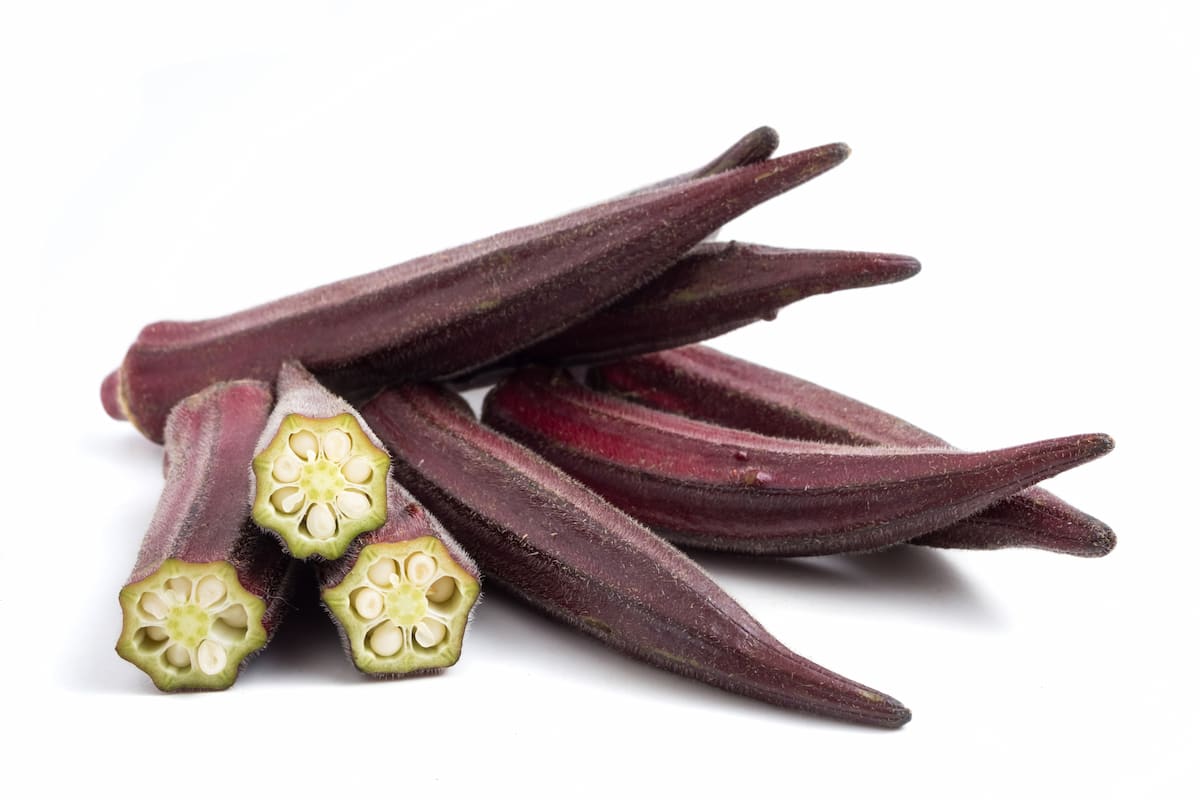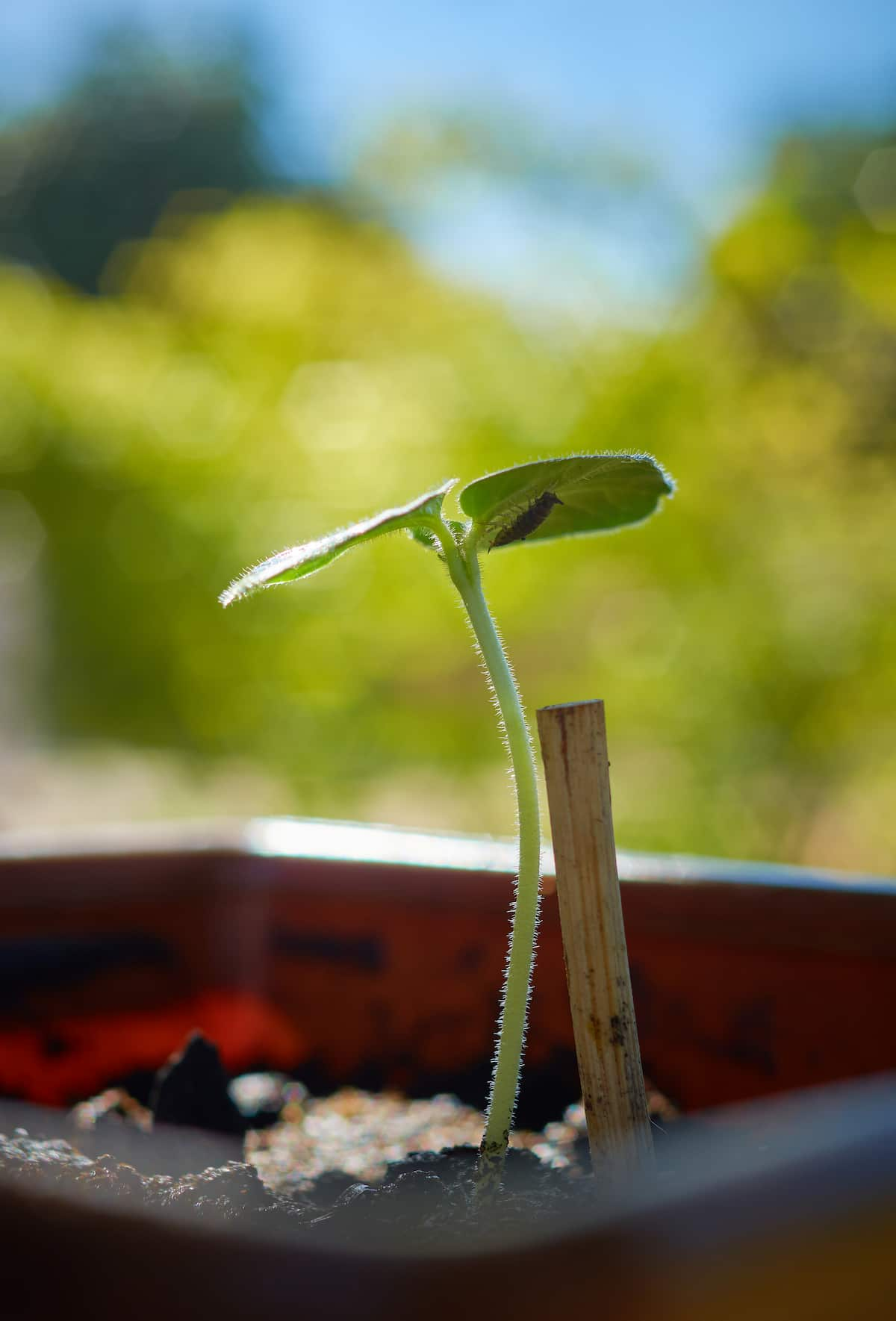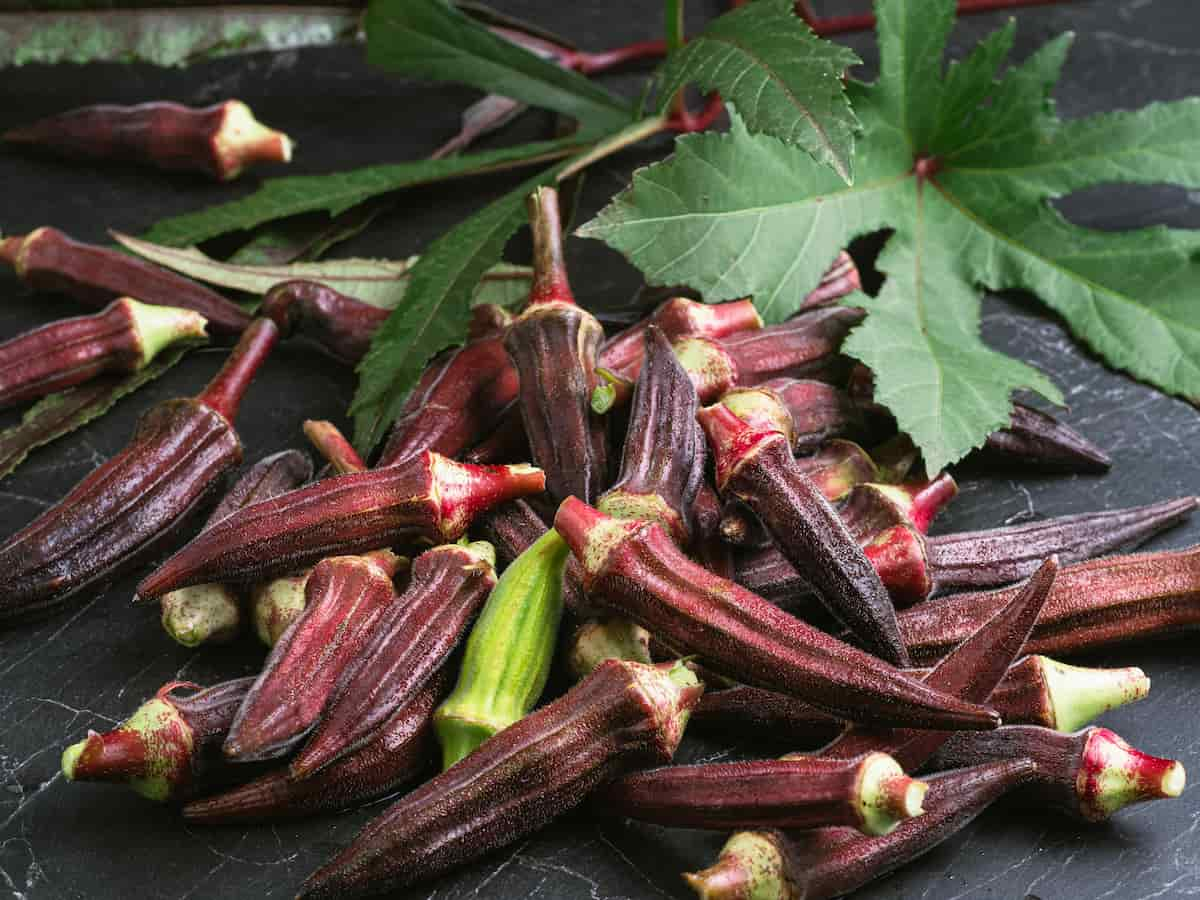Growing ‘Red Burgundy’ okra from seed is a great way to add a unique and colorful touch to your garden. This variety of okra produces deep red pods that are visually striking and delicious. In this step-by-step planting guide, we will take you through everything you need to know to grow ‘Red Burgundy’ okra from seed successfully. Below we learn how to plant Red Burgundy Okra step by step, the Red Burgundy okra plant growing stages, and the characteristics of the Red Burgundy Okra Variety.

Characteristics of Red Burgundy Okra Variety
Red Burgundy okra is a unique variety of okra prized for its deep red pods and flavorful taste. This variety is characterized by its stunning appearance, with long, slender pods that are a rich burgundy color. The pods are slightly curved, have a pointed tip, and grow 3-4 inches long. In addition to their striking appearance, the pods are tender and flavorful, with a slightly sweet taste similar to traditional green okra.
Red Burgundy okra is a warm-season crop that thrives in full sun and requires consistent moisture to grow. This variety is relatively easy to grow from seed, producing a high yield of pods perfect for cooking and preserving. The plants themselves are tall and upright, with large leaves and prickly stems. Red Burgundy okra is an excellent choice for gardeners who want to add a unique and visually striking vegetable to their garden while enjoying okra’s delicious taste and health benefits.
How to Grow Red Burgundy Okra from Seed
Choose the Right Time to Plant
The first step to growing ‘Red Burgundy’ okra from seed is to choose the right time to plant. Okra is a warm-season crop that requires plenty of heat and sunlight to thrive. Therefore, it is best to plant okra in the late spring or early summer once the soil has warmed up and the threat of frost has passed. In most regions, this means planting between mid-April and early June.
Choose the Right Location
Okra thrives in full sun, so choose a place in your garden that gets at least 6-8 hours of direct sunlight daily. If your soil is heavy or compacted, you may need to amend it with organic matter such as compost or aged manure.
Prepare the Soil
Before planting your okra seeds, it is important to prepare the soil properly. Begin by clearing the planting area of any weeds or debris. Use garden fork or tiller to loosen the soil to a depth of at least 8-10 inches. Work in a 2-3 inch layer of compost or aged manure to improve soil fertility and structure.
Plant the Red Burgundy Okra Seeds
Once your soil is prepared, it is time to plant the ‘Red Burgundy’ okra seeds. Sow the seeds ½ to 1 inch deep and 2 to 3 inches apart. If starting indoors, plant the seeds in small pots or seed trays filled with a good-quality seed-starting mix. Water the seeds and place the pots or trays in a warm, sunny location or under grow lights. Keep the soil moist but not waterlogged, and thin the seedlings to one per pot or cell once they have developed their first true leaves.
Water and Fertilize Regularly
Once your okra seeds have germinated and begun to grow, it is important to water and fertilizes them regularly. Okra requires consistent moisture to thrive, so water deeply once or twice a week, depending on the weather and soil conditions. Fertilize your okra plants once a month with a balanced fertilizer, such as a 10-10-10 or 20-20-20 formula.
In case you missed it: How to Grow Okra/Bhendi in Greenhouse: A Step-By-Step Guide for Seed to Harvest

Provide Support
As your ‘Red Burgundy’ okra plants grow, they may require support to prevent them from falling over. You can provide support by staking or trellising the plants. Drive a sturdy stake into the ground next to each plant, and tie the stem to the stake with soft twine or garden tape. Alternatively, you can train the plants to climb a trellis or fence.
Harvest the Pods
‘Red Burgundy’ okra plants will begin to produce pods 60-70 days after planting. Harvest the pods when they are 3-4 inches long before they become tough and fibrous. The pods may be separated from the stem with the use of a pair of scissors or a knife. Be sure to wear gloves or use a towel to protect your hands from the prickly stems.
Harvest your okra pods regularly, at least every two to three days, to encourage the plants to keep producing. If you allow the pods to become too large, the plant will slow down or stop producing altogether.
Address Common Problems
- Yellowing leaves: If your okra leaves are turning yellow, this may indicate a nutrient deficiency or overwatering. Make sure you are fertilizing and watering properly.
- Powdery mildew: Powdery mildew is a fungal disease affecting okra plants. It appears as a white or grayish powder on the leaves. To protect your plants against powdery mildew, avoid watering them from above and make sure they have enough of ventilation.
- Insects: Common okra pests include aphids, spider mites, and stink bugs. To control these pests, use insecticidal soap or neem oil, or encourage natural predators such as ladybugs and lacewings.
In case you missed it: Can You Grow Okra from Store-bought Okra: A Step-by-step Process Guide

Conclusion
Growing ‘Red Burgundy’ okra from seed is a rewarding and relatively easy gardening project. By following these steps, you can enjoy a bountiful harvest of delicious and visually striking okra pods. With a little care and attention, you can grow a beautiful and productive garden full of this unique and tasty vegetable.
- Feed Your Flock for Less: Top 10 Tips to Save on Chicken Feed
- Ultimate Guide to Ossabaw Island Hog: Breeding, Raising, Diet, and Care
- Hatching Answers: The Top 10 Reasons Your Chickens Aren’t Laying Eggs
- Eggs and Economics: Breaking Down the Cost of Raising Backyard Chickens
- Defend Your Greens: Proven Methods to Keep Iguanas Out of Your Garden
- Ultimate Guide to Cinnamon Queen Chicken: A Comprehensive Guide for Beginners
- Ultimate Guide to California Tan Chicken: Breeding, Raising, Diet, Egg-Production and Care
- Ultimate Guide to Marsh Daisy Chicken: Breeding, Raising, Diet, and Care
- 10 Types of Chicken Farming Businesses You Can Start for Profits